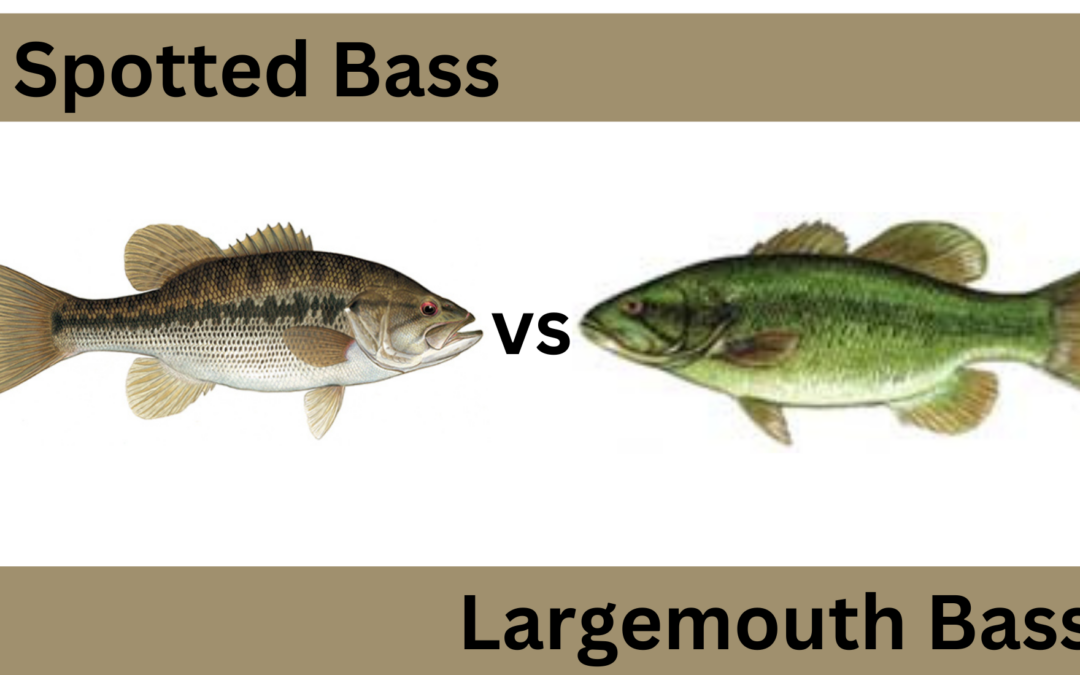Spotted Bass and Largemouth Bass are two different species of black bass. They can be quite similar in appearance, which sometimes leads to confusion among anglers, but there are several key differences that can help distinguish between the two:
Appearance:
Spotted Bass (Micropterus punctulatus): They are often green with a white belly and characterized by the presence of small, dark spots along their lower sides, forming a horizontal line. The jaw does not extend beyond the back margin of the eye when the mouth is closed. The first and second dorsal fins are almost separated, with a deep dip in between.
Largemouth Bass (Micropterus salmoides): These bass are generally larger and have a more elongated body. The upper jaw extends beyond the back margin of the eye, giving them a larger “mouth” appearance, hence the name. They often have a dark, broad stripe along their sides.
Habitat:
Spotted Bass: These fish prefer clearer water with rocky bottoms and areas with a cover like vegetation or downed trees. They are more common in the southern United States. Lake Lanier is a fantastic lake to catch spotted bass in!
Largemouth Bass: They are adaptable and can thrive in a variety of water conditions, including murkier waters, and are found throughout the United States. They tend to stay near structures such as logs, rock ledges, vegetation, and man-made structures.
Behavior:
Spotted Bass: They are known to be more aggressive than largemouth bass and are more likely to be found in or near cover. Spotted bass are also more tolerant of flowing water than largemouth bass.
Largemouth Bass: They are known for their aggressive strikes and dramatic fights when hooked, often leaping out of the water.
Size:
Spotted Bass: Spotted bass are generally smaller than largemouth bass. The average length is around 12-17 inches, and they typically weigh 1-2 pounds but can grow larger in certain conditions. Lake Lanier provides perfect conditions for spots and they often reach over five pounds.
Largemouth Bass: Generally larger, with an average length of 18-24 inches and a weight of around 10 pounds. The largest one ever caught weighed over 20 pounds.
Diet:
Spotted Bass: These fish are opportunistic feeders and their diet can include insects, crustaceans, and smaller fish. Larger spotted bass will also eat larger prey, including smaller fish of other species. Blueback herring in Lake Lanier is the preferred prey of spots.
Largemouth Bass: Are also opportunistic predators. They feed on a variety of prey, including fish, crayfish, and even small aquatic birds, frogs, and small mammals if the opportunity arises.


Recent Comments